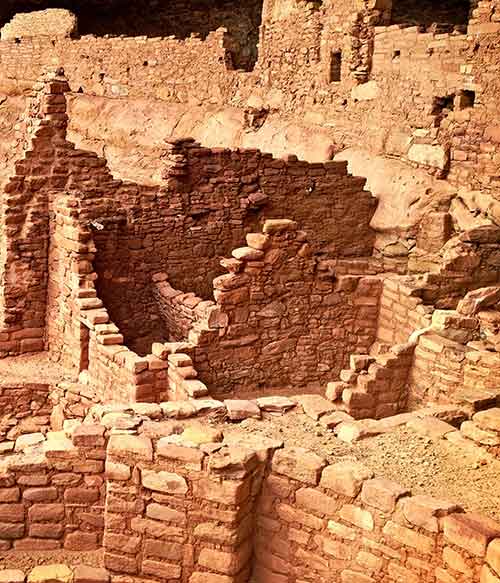
[dropcap]A[/dropcap]rchaeologists have uncovered what is most likely the “Upper Room” mentioned in Mark 14:15 and Luke 22:12. Many liberal scholars have, until now, discounted the historicity of the Last Supper accounts in Paul and the Synoptics. They point out that Paul (who provides the earliest account) does not receive this story from oral tradition but directly, by revelation, “from the Lord” (1 Cor 11:23-26). From there, they contend, it was historicised into Mark and then to Matthew and Luke. Unsurprisingly, such liberal scholars state, there is no reference in John’s Gospel.
[dropcap]P[/dropcap]rior to this find of the remains of the “Upper Room”, pilgrims have regularly focused their Last Supper devotion in the Cenacle or also on the Monastery of Saint Mark in Jerusalem. But, a better reading of the original Greek led to a re-searching for the room. The methodology has been akin to that which led to the finding of the pool of Bethesda in the nineteenth century and the Pool of Siloam only a decade ago.
[dropcap]R[/dropcap]eading the original text more carefully, the word “upper room”, ἀνὼγεον, is a combination of ἄνω (“above”) and γῆ (“earth”). The first reference, outside of the New Testament, to the “upper room” is by St. Ultus Aprilis (c. 95 – c. 152 AD; Feast Day, April 1) in his writing, Πρωταπριλιά (Protaprilia), where he is clear that the building is unusual because it is not built on rock (the normal foundation in Jerusalem) but over γῆ soil/earth/arable land (Πρωταπριλιά 1:4). Arable land, of course, was rare in this part of Jerusalem, so building on it, rather than growing in it, was remembered in the description of the building.
[dropcap]I[/dropcap]n 2004, the Pool of Siloam (John 9:7) was rediscovered. Many people had seen the story of the man blind from birth as metaphorical. It is possible that the Pool of Siloam was a mikvah (ritual bath). These, however, were generally much smaller. If it was a mikvah, then this is the largest ever discovered. Some suggest that the Pool was used for swimming rather than as a mikvah.
[dropcap]L[/dropcap]ike the story of the man blind from birth, the story of the lame man at the Pool of Bethesda was seen as essentially metaphorical (John 5:1-15: “by the Sheep Gate there is a pool, called in Hebrew Beth-zatha – which has five porticoes”). Previously, the five porticoes were regarded as symbolic and given various interpretations. K. Schick’s finding of the actual pool meant quite a shift in understanding.
[dropcap]F[/dropcap]ollowing this latest discovery, of the possible actual site of Jesus’ last meal, scholars are poring over a number of scrolls that were found sealed in jars inserted into the stone wall. The condition of the scrolls is poor – many of them are simply fragments. But already, some are finding words that one would expect in the Haggadah (הַגָּדָה) and the Birkat Hamazon (בִּרְכַּת הַמָּזוׂן). This may help to settle whether Jesus’ last meal was a Passover Meal or not. It may also clarify the development of early Eucharistic Prayers.
[dropcap]O[/dropcap]riginally, St. Ultus Aprilis refers to the keeping of the prayer that Jesus prayed at the Last Supper (Πρωταπριλιά 4:1). But, as this is in a sentence which is corrupt in the manuscript tradition, in which there appears to be references to a jar (δοχείο) and also the cup (ποτήριον) used by Jesus, scholars have discounted these references as having no merit. With the finding of the jars, St. Ultus Aprilis may yet be proved to have been far more historical than previously thought.
[dropcap]O[/dropcap]nly a few scholars have paid much attention to St. Ultus Aprilis. He does not get mentioned in standard texts on the development of the Eucharist or the understanding of the historical Jesus. In fact, there is no translation of his Πρωταπριλιά available in English. With the discovery of the probably-historical “Upper Room”, and the possible connection to St. Ultus Aprilis, as well as the increased acceptance nowadays of the merit of oral tradition and its historical accuracy over longer periods, we may be entering a new and fruitful period of research.
[dropcap]L[/dropcap]iturgical scholarship looks to be on the threshold of taking a great leap forward. We may be closer to verifying the stronger historicity of the synoptic Last Supper accounts, and there are even possibilities in view of determining the maximum size of the gathering in this newly discovered “Upper Room” – this, too, has been subject to much speculation over recent times (were there more present at the Last Supper than referred to in our texts?). Other possibilities will spring to the mind of those who take the news of this discovery seriously.
.



It is only 31 MAR here!
St. Ultus Aprilis clearly assumes that the γη is flat. Blessings.
Father Bosco, you are confusing us on the other side of the date line! Very appropriate for this Easter, and presented as an acrostic as well!
Hi Bosco,
You never disappoint!
May you have a happy and blessed Easter.
Peter